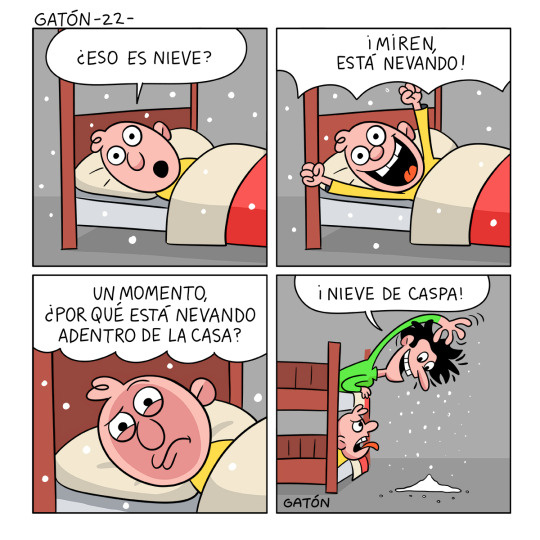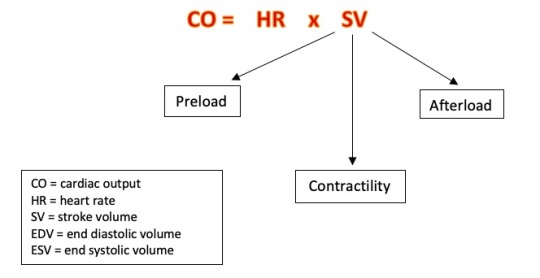#Caspa
Text
Abdominal Pain PSA
I've had a run of people admitted to the ICU after have 1-2 weeks of abdominal pain who were struggling to eat or drink that ended up having conditions leading to necrotic bowel. Dead bowel makes people incredibly sick. Like, death's door sick. Anecdotally, I'd say maybe 60% of our patients make it through such an ordeal. Every time I talk with their families, their loved ones say that they looked bad and they tried to get the patient to go get some help. Often, these people wait too long.
So.
PSA: if you're having abdominal pain and can't keep anything down for more than 48 hours (especially in the context of N/V WITHOUT bowel movements), you NEED to go to the ER. Not urgent care. Not your PCP. The ER. Please get checked out. Do not let things sit. If you have known GI disease like diverticulosis, a hernia, etc, even more of a reason to get checked out.
#critical care#medicine#abdominal pain#necrotic bowel#medblr#pablr#nurblr#pharmblr#physician assistant#physician associate#pa-c#pre-pa#pa-s#pa school#caspa
164 notes
·
View notes
Text
youtube
2 notes
·
View notes
Video
youtube
CASPA - FLOOR DEM
2 notes
·
View notes
Photo

26 notes
·
View notes
Text
youtube
Depeche Mode - Wrong (Caspa Remix)
5 notes
·
View notes
Text
#44 Where Have We Been?
#44 Where Have We Been?
For the last month, you may have noticed that My Biology Experience has been inactive with no new content. So, what have we been up to and what is to come in the following months?
First, we would like to say thank you to all the subscribers, followers, creators, and whoever else may be supporting our journey. Without people supporting this website, we would have a lot less to show for it. If you…

View On WordPress
#abroad#animals#biology#blog#CASPA#college#facts#follow#forensic science#nature#photography#Physician Assistant#science#subscribe#Travel#UK#University#updates
3 notes
·
View notes
Text
Cómo evitar la sequedad e irritación de tu cuero cabelludo
🌸Bienvenid@🌸
Toda mi vida he tenido problemas con mi pelo: seco en puntas y medios, y graso en las raíces.
Siguiendo el consejo de mi dermatóloga, usaba champús para piel grasa: algo que agravó el problema y me regaló una psoriasis capilar (como tener pica pica en la cabeza, ¡uff!).
Finalmente, cambié de enfoque y poco a poco todo mejoró (esa es una historia para otro día), hasta llegar a…

View On WordPress
#cabelloencrespado#cabellograso#cabelloseco#caspa#cosméticanatural#cuerocabelludoirritado#cuidadocapilar#dermatologia#elisa_healthyharmony#enfermedadesinflamatorias#equilibriomicrobioma#faltadesueño#hoymecuido#microbioma#novedadesinteresantes#pielgrasa#productossaludables#psoriasis#saluddigestiva#storytelling#vegan#vitaminab#vitaminak#Cabello#salud
0 notes
Text

EL MONAGUILLO INTERGALÁCTICO en: "Hurto y huida"
#comicart#comics#historieta#diegoarandojo#monaguillointergalactico#comicpage#dearand#comic#alcohol#Caspa#Licores#Licor#Bebidas alcohólicas#historieta argentina
0 notes
Text
#pa school prep#PA#Pre-PA#CASPA#PA School#physician associate#physician assistant#PA-S#PA School Interview#PA School Prep#Pre-Med#Pre-Nursing
0 notes
Link
pic.twitter.com/2nQOVgzqRV
— NO CONTEXT HUMANS (@HumansNoContext) January 13, 2024
1 note
·
View note
Text
3 maneras de evitar que te pique el cuero cabelludo
Mantener un cuero cabelludo sano. Es la mayor inversión para tu cabello
Photo by Nyara Aquino on Pexels.com
Hola, Cury. A menudo nos preguntamos por qué nos pica a cabeza. Y si es posible, hallar una solución para ese picor del cuero cabelludo. Lo cierto es que algunos de problemas que padece el cuero cabelludo, tienen un factor hormonal. Y es posible que sea debido a la hormona andrógena. Que…

View On WordPress
#aceites#afecciones#andrógena#bacterias#Cabello#cabelludo seco#caspa#champú anti caspa#cuero cabellodo#dermatitis#exceso de grasa#glándulas#grasa#hidratación#hongos#hormona#inflamación#lavada de cabello#lavadorutina#mantequilla#médico#picores#piel#poros
1 note
·
View note
Text
Shock
Time for the learning! A quick breakdown of the 4 types of shock so all you students getting pimped on rounds will be freakin' bosses. In all seriousness, this is vital to understand and if you're thinking of emergency medicine or critical care, it is extremely important to get this down pat. Remember, septic shock and hemorrhagic shock are SUBCATEGORIES, not one of the 4 main types.

When you think about shock, generally think about someone who (usually) has a reversible problem that causes enough hemodynamic instability that they require vasopressors. Essentially, cardiac output is reduced. Depending on the etiology of the shock, the symptoms can very. Before thinking about shock, it's important to understand cardiac output.

Stroke volume is defined as the volume of blood (in L/min) that exits the left ventricle per heart beat. More specifically, this is EDV-ESV of the left ventricle. You've learned about the Frank Starling Curve - I'm choosing to explain it a little differently without using the curve.
I think of heart rate as being a response to a certain change in stroke volume. Two of the three components of SV are proportional.

When preload increases, stroke volume increases. When afterload increases, stroke volume decreases.
Preload is referred to as end-diastolic volume, i.e. the amount of blood in the ventricle at the end of diastole and prior to ejection through the aortic valve.
Contractility is the amount of cardiac muscle stretch prior to ejection.
Afterload is the amount of pressure the left ventricle must overcome to eject blood through the aortic valve. You can think of this as systemic vascular resistance.
When thinking about shock, think about what components of stroke volume are possibly being effected.
General symptoms of shock: hypotension, tachycardia, bradycardia, confusion, delirium, LOC, dizziness, lightheadedness, general malaise, febrile, sweating, pallor, shortness of breath
In the treatment sections below, please consider your ABCs first.
Hypovolemic
Main problem: there isn't enough volume in circulation to support normal hemodynamic function. Not enough preload.
Examples: dehydration (vomiting, diarrhea), hemorrhage (loooooong list of etiology), pancreatitis, severe insensible fluid loss (big burns, open abdomens), etc
Subcategory: hemorrhagic shock
Treatment: fluid or product resuscitation, stopping the source of bleeding
Obstructive
Main problem: something is compressing the heart or creating a circulatory blockage which disrupts normal hemodynamics/heart function. Afterload is increased.
Examples: tamponade, tension pneumothorax, PE, severe STEMI.
Treatment: reduce the afterload. Dependent on cause - pericardiocentesis, needle decompression, chest tube insertion, anticoagulation/ thrombectomy, cardiac angio/catheterization.
Distributive
Main problem: something is causing volume to be dispersed in places that it should not via severe vasodilation. Blood vessels are so vasodilated that adequate tissue perfusion doesn't occur. Disruption in preload via reduced afterload (systemic vascular resistance). This type of shock is also referred to as vasodilatory shock.
Examples: bacteremia, large burns, polytraumatic injury (or anything particularly inflammatory like anaphylaxis), spinal cord injury, TBI
Subcategory: septic shock, neurogenic shock, anaphylactic shock, shock due to adrenal crisis.
Treatment: increasing systemic vascular resistance with use of vasoconstricting drugs, +/- treating the infection, reducing inflammation (steroids)
Septic shock is tricky because CO can be maintained for a time. The heart will compensate by increasing the rate, which is why septic patients routinely have HRs well over 120 bpm. But the increased HR is a sign that SOMETHING ISN'T right. If you have a patient with a new, increased HR, do NOT simply treat with a beta blocker (you'll probs code them if they are septic). Think WHY is the HR increased? If you need a vasopressor for a septic patient, norepinephrine is ALWAYS the first choice per Surviving Sepsis Guidelines.
Neurogenic shock presents itself differently because the etiology of the vasodilation is decreased sympathetic tone. Because of this, you'll have a hypotensive patient who is also bradycardic. Seen in patients with new spinal cord injury most commonly and sometimes new TBIs. These patients need MAP goals, usually over >80, with the help of a vasopressor to keep them out of a shock state. Any pressor will do, generally if my patients aren't excessively bradycardic I'll use phenylephrine.
Anaphylactic shock is unique due to it's rapid development and more immediate risk to the airway. Intubating these patients is the first priority. The vasopressor of choice is epinephrine.
Shock due to adrenal crisis should first be treated with high dose hydrocortisone. Any pressor will do (though to be honest, I have never had a patient in adrenal crisis myself, so suggestions welcome). This type of shock has some secondary concerns like sodium and calcium loss that need to be corrected immediately. It's most commonly triggered by dehydration so fluids are a must.
Cardiogenic
Main problem: pathology within the heart is causing disturbed hemodynamics. Increased afterload OR increased preload (think right heart failure). Reduced contractility. It's the one form of shock that is less likely to be reversible, ie. if you have structural heart disease of any kind, that's not reversible.
Examples: chronic heart failure (left or right), cardiomyopathy, severe aortic stenosis, Takasubo's, STEMI, ventriculoseptal defect, ventricular outflow obstruction (LVOT obstruction).
Treatment: depends on etiology but generally involves increasing contractility by adding an inotrope like dobutamine, milirinone, etc. Correcting or improving the underlying issue can improve things. These patients often need vasodilating agents to reduce afterload. If they are too sick for an intervention, they may need ECMO, IABP, or LVAD/RVAD to bridge them to improve enough for a procedure.
Overall Message
When you have a patient with low blood pressure requiring vasopressors, think about the underlying etiology to figure out the differential. Don't look at clinical symptoms separately - there is often a bigger picture at play. Also worth nothing that multiple kinds of shock can exist in the same patient OR treatment for one type causes another.
Good luck!
#shock#types of shock#cardiogenic shock#distributive shock#hypovolemic shock#obstructive shock#pablr#physician assistant#pa school#medicine#pa-c#pa-s#physician associate#caspa#pre-pa#critical care#medblr#nurblr#pharmblr#adrenal crisis#neurogenic shock#anaphylactic shock#preload#afterload#contractility#frank starling#shock treatment#causes of shock
30 notes
·
View notes
Text
youtube
Music Video: Caspa - Light It Up feat. Crazy D
0 notes
Video
youtube
Caspa - Rubber Chicken
2 notes
·
View notes
Text
Comezon en la piel cabelluda
La comezon en la piel cabelluda es una de las manifestaciones de la dermatitis seborreica
La dermatitis seborreica del adulto es un proceso crónico, que puede cursar con brotes de comezon en la piel cabelluda y que el tratamiento va dirigido a controlar las manifestaciones clínicas, no a curar la enfermedad. Usualmente afecta el cuero cabelludo, pero también puede afectar la piel de otras partes…

View On WordPress
#ardor#avene#caspa#cetaphil#clobex#comezón piel cabelluda#cutis graso#dermatitis#dermatitis seborreica#el estres#farmacia dermatologica en los cabos#kelual#kerium#klorane#La roche-posay#laroche#Los Cabos#recomendaciones del dermatologo#seborrea#selegel
0 notes
Text
Diga adeus aos incômodos! Se você sofre com caspa, experimente o poder do cetoconazol para um couro cabeludo saudável. E se o suor excessivo é o seu desafio, confie no Vichy Stress Resist para se manter fresco e confiante. Viva sem preocupações! 💆♀️💦 Para saber qual o tratamento ideal para a sua pele, agende seu horário através do link na bio! www.drajulianaruthesmartines.com.br/ #dermatologia #estetica #botox #procedimentosesteticos #clinicaestetica #clinicadermatologica #dermato #dermatosp #esteticaavancada #rugas #linhasdeexpressão #CuidadosCapilares #ConfiançaTotal #Caspa #suorexcessivo #vichy #cetoconazol
#dermatologia#estetica#botox#procedimentosesteticos#clinicaestetica#clinicadermatologica#dermato#dermatosp#esteticaavancada#rugas#linhasdeexpressão#CuidadosCapilares#ConfiançaTotal#Caspa#suorexcessivo#vichy#cetoconazol
0 notes